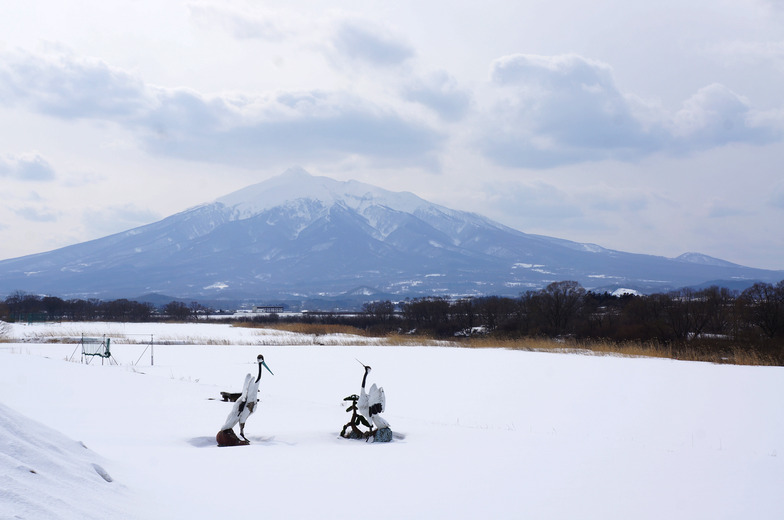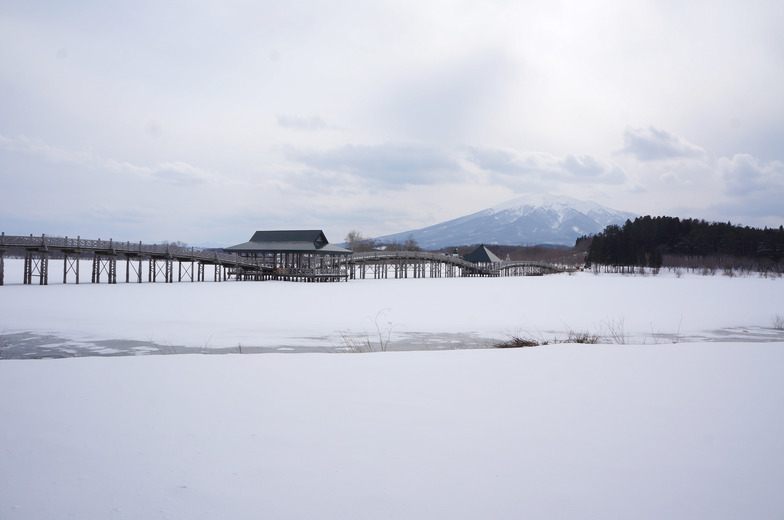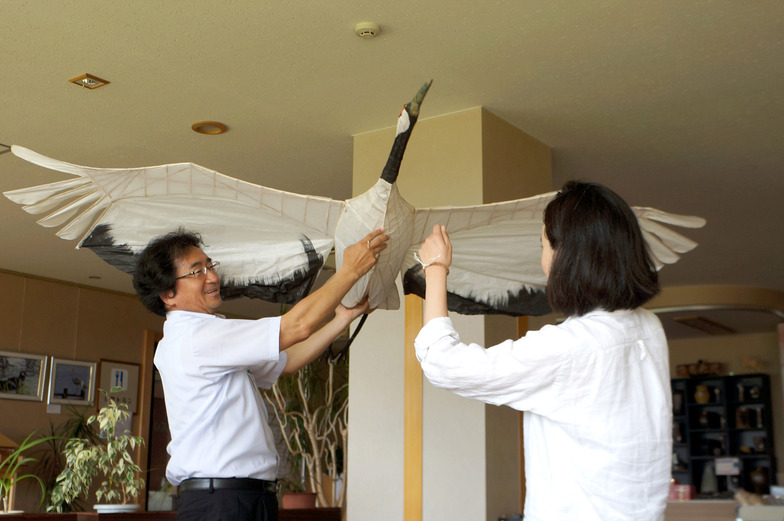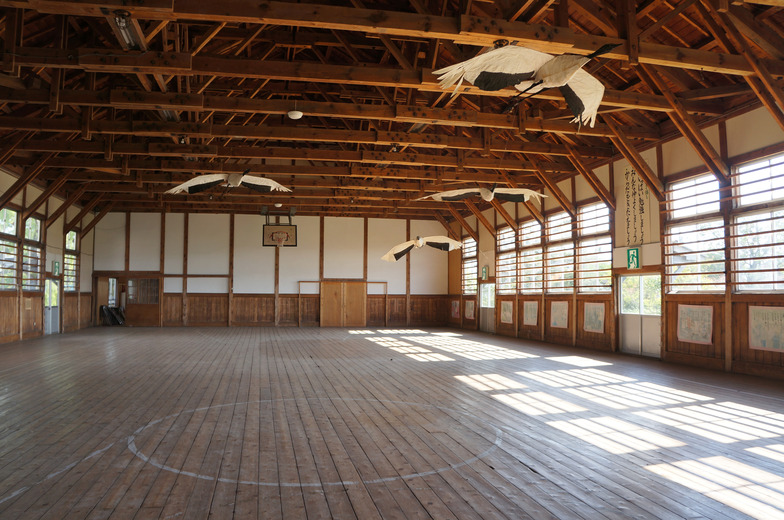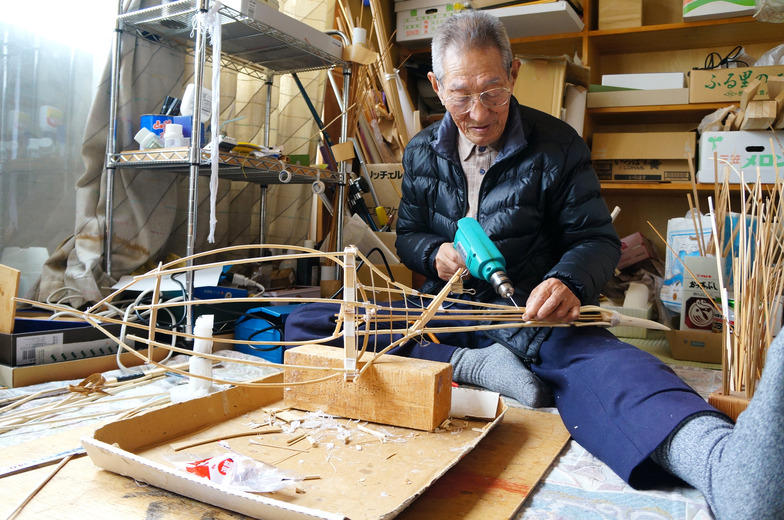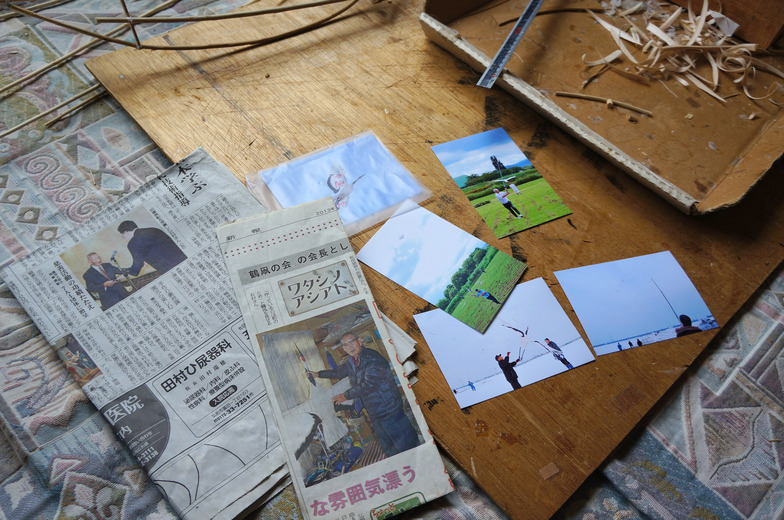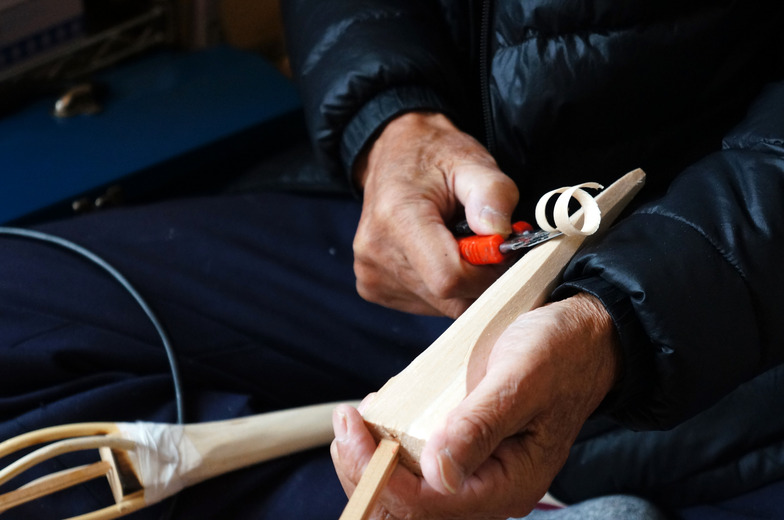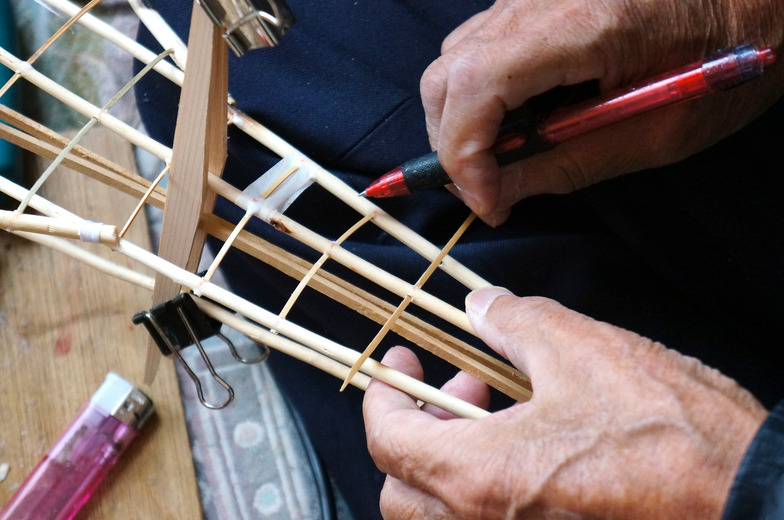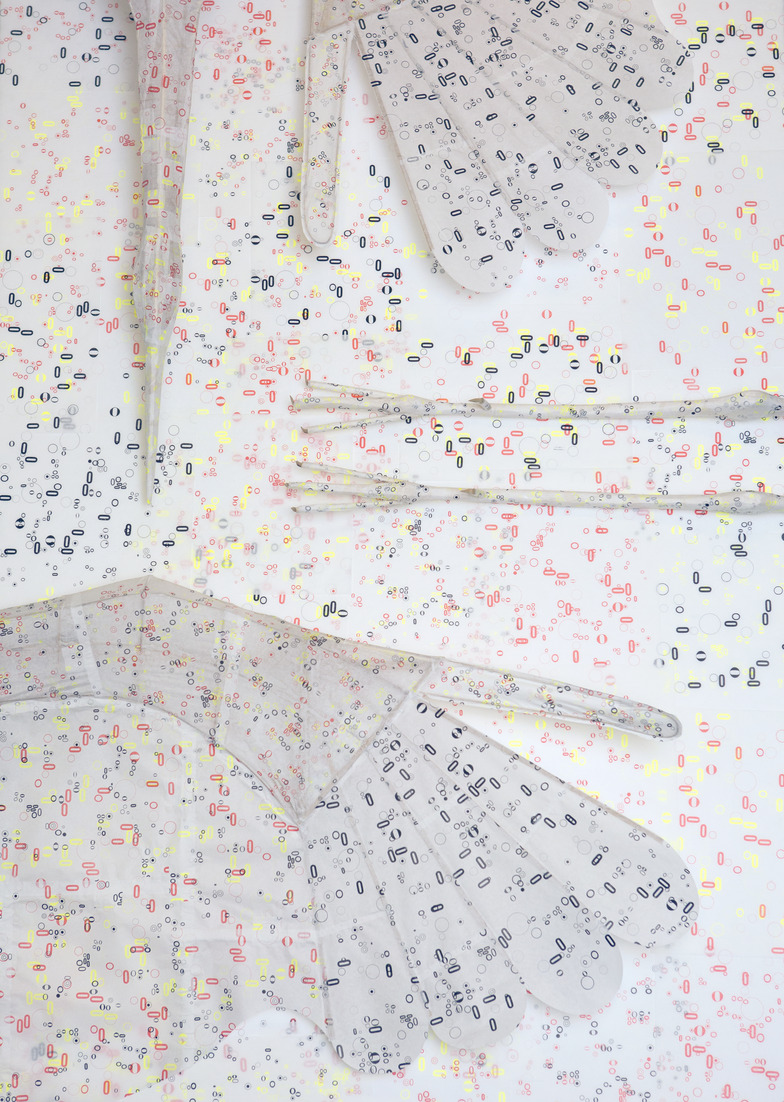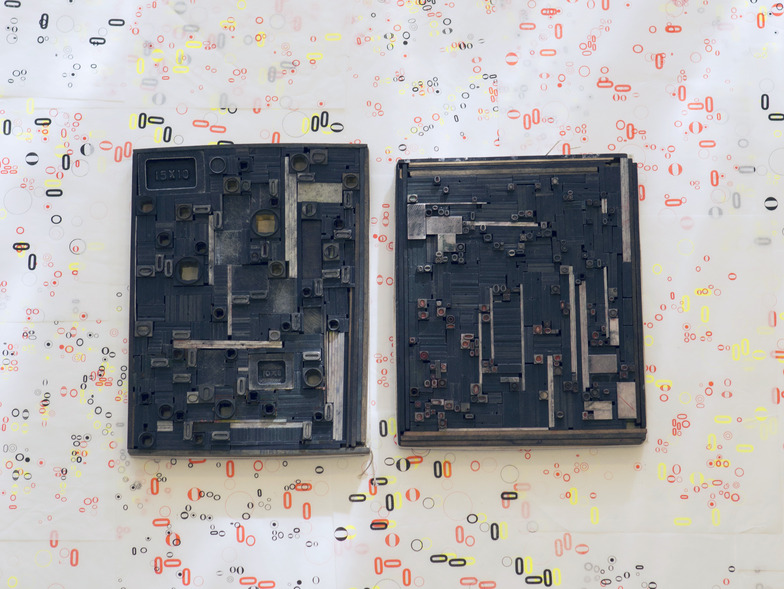Mr. Takamitsu Akiba of Tsuruta Town Hall kindly responded to my clueless inquiry after I was captivated by the beautiful crane kites. And introducing me to crane kites of various sizes was Mr. Yukio Ishimura, the town's foremost kite maker. At 86 years old, he evacuated from Karafuto (Mr. Ishikawa pronounces it "Kaba-futo"; present-day Sakhalin) at age 18 and settled in Tsuruta Town. Now, he instructs others in crane kite making, serving as a vital link bridging Hokkaido and Aomori on the Tohoku side of this tradition. Today, the blueprints for crane kites exist only in Mr. Ishimura's mind. He crafts crane kites of various sizes without ever referring to a diagram. This time, I will inherit the beautiful framework of these crane kites, meticulously crafted by Mr. Ishimura's skilled hands.
What innovations will we bring to the crane kite?
A standard crane kite is completed by attaching washi paper to this frame and applying colors like red or black, matching the hues of real red-crowned cranes. So, for this project, how could we innovate the crane kite from here? That's when I thought about incorporating something I wanted to pass on into the gifted crane kite.
What came to mind was the technique of letterpress printing.
Passing on Letterpress
For an art director, printing is deeply intertwined with their profession. Amidst the era's shift towards offset and on-demand printing, letterpress—where lead type is set and printed under pressure—is gradually disappearing.
The small printing shop "Edo-bori Printing," which assisted me this time, was established in 2011 after inheriting type from another letterpress factory that had reluctantly closed. Standing before the carefully stored type in the back of the shop, I worked with shop manager Kaori Ono on the letterpress design for the crane kite, experimenting repeatedly.
From the vast number of typefaces, we selected various circles (○). As the symbol of the crane, the red circle on its head, and also because the circle is a simple, dynamic shape with no beginning or end. We entrusted the circle to represent how tradition rolls along, passing through land and people, connecting time.
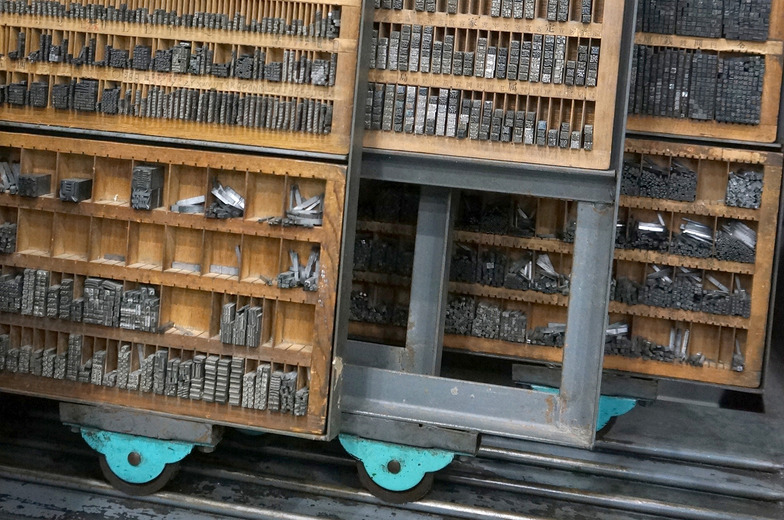
The sliding-door type movable type cabinet, also called a "horse"
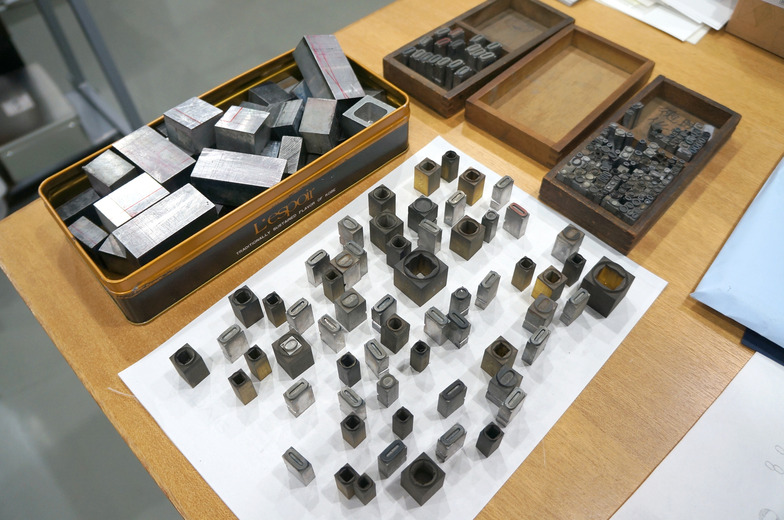
Arranging and considering the typesetting layout
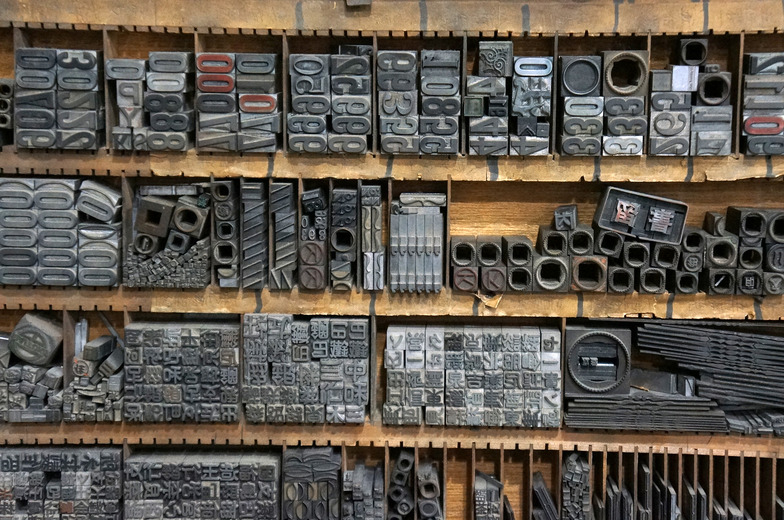
From here, we'll find various ○

Filling the tiny gaps is difficult
From a vast stock of type, we search for various circles—regardless of font, symbol, or size—and set them. Then, at the final stage of printing, printer Shinji Nagaoka takes the stage. The printing press is a 1960s West German model. This machine too resonates with the nostalgic, comforting rhythmic sounds of printing.
In letterpress printing, creating patterns through random typesetting is actually quite unusual. Master printer Nagaoka-san said this was his first attempt at such a project. Consequently, there were various mishaps, like the typesetting loosening due to the printing vibrations.
Two types of plates were set up: large circles and small circles. The process, spanning half a day, involved changing plates and paper orientation multiple times to layer three colors—black, red, and fluorescent yellow—creating the pattern. Ms. Ono, the shop manager and a working mother, even returned after picking up her child from daycare, providing invaluable assistance late into the night.
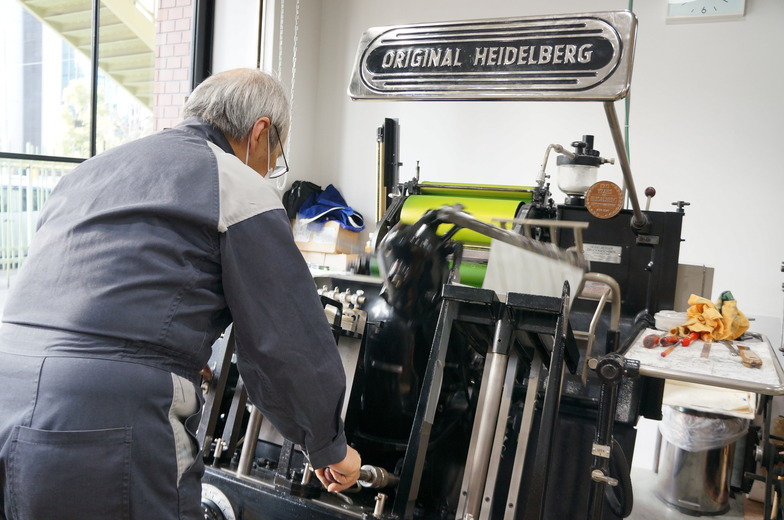
A platen printing press from Heidelberg in West Germany
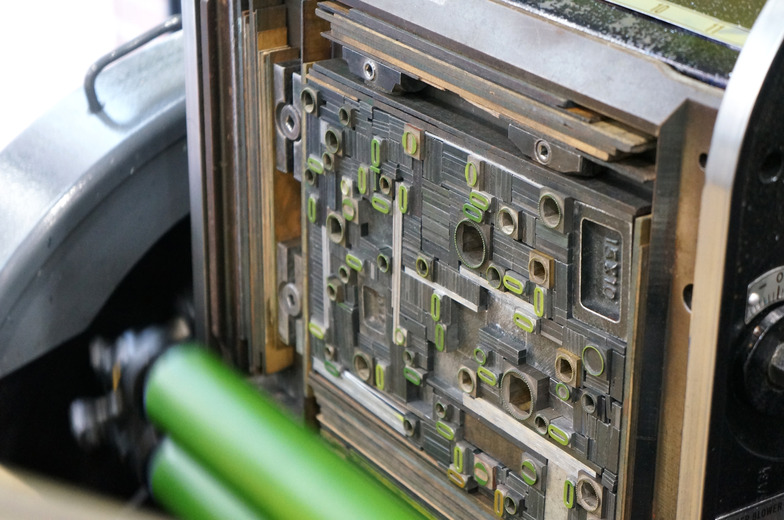
Setting up a different plate to print the second plate
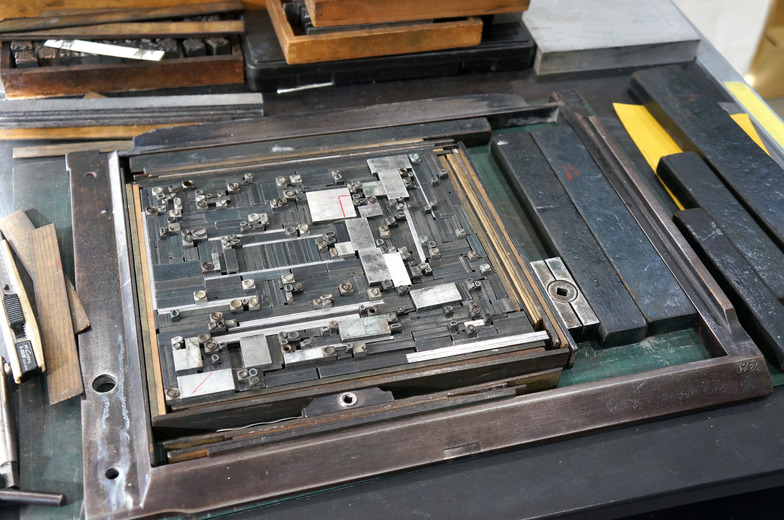
Set the first composition
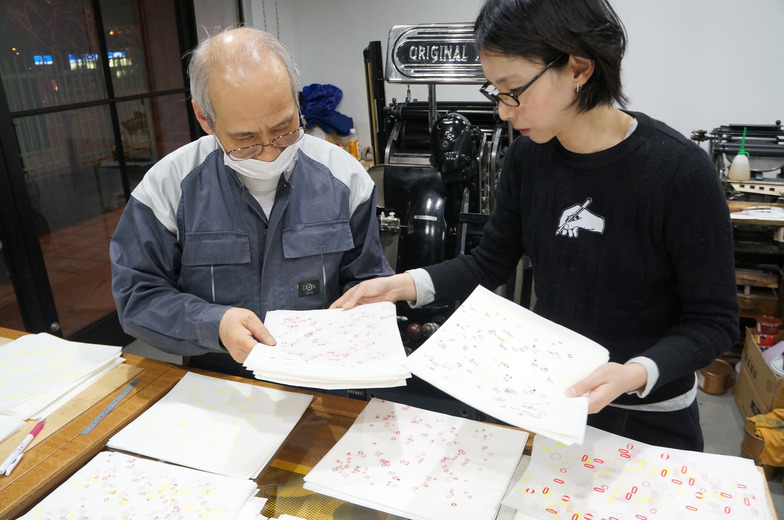
Working alongside craftsman Nagaoka-san while checking the print
A crane kite adorned with letterpress printing
Instead of washi paper, the paper used for printing this time was "aishi" (interleaving paper) – the cushioning paper sandwiched between the aluminum plates extensively used at Edo-bori Printing. This paper is typically discarded. Its texture resembles tracing paper, and I'm very fond of it.
After printing, I personally applied the paper, imbued with the unique texture only letterpress can create, to the crane kite's frame.
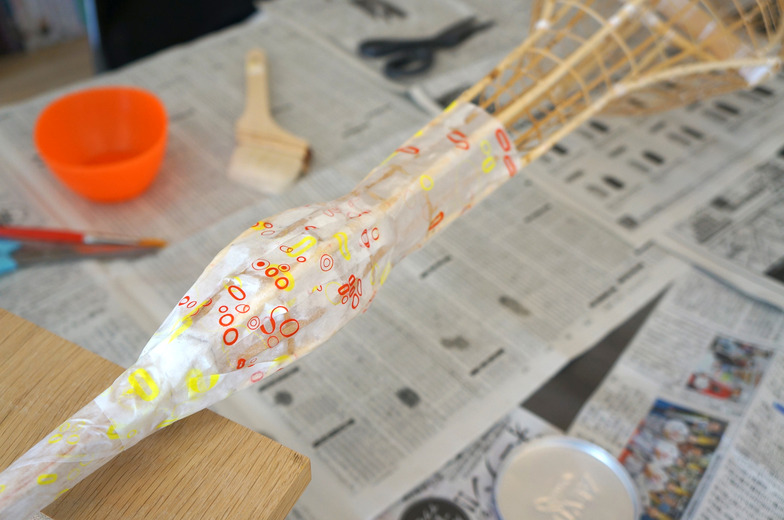
The beak is mostly yellow, the head mostly red.
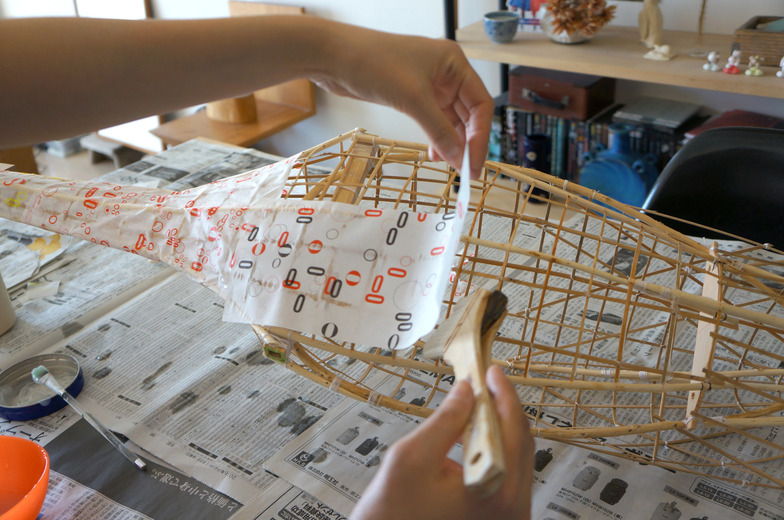
Black patterns on the body
Finally, we completed the installation by creating an installation with this kite and photographing it with photographer Daisuke Yoshida.
Old things and techniques often struggle to remain in their place as times change. Through this project, I encountered many instances where they found new life in different places or with new makers, carefully passed down.
It was striking when Mr. Ishimura, the crane kite maker, immediately replied that the most enjoyable moment is when it flies well. I also hope to fly this crane kite in the sky somewhere someday. Mr. Ishimura said he started making crane kites because he "got hooked." I often recall that simple yet powerful answer lately.
Making Movie
Cooperation: Takamitsu Akiba (Tsuruta Town Office)
Photography: Yoshida Daisuke
Video Editing: Yoshiyuki Okada (Dentsu Inc. Creative X)
Music: te to hi









